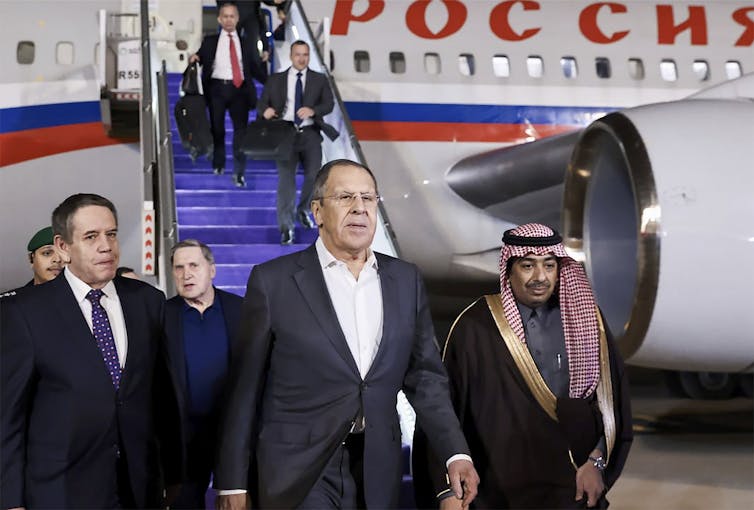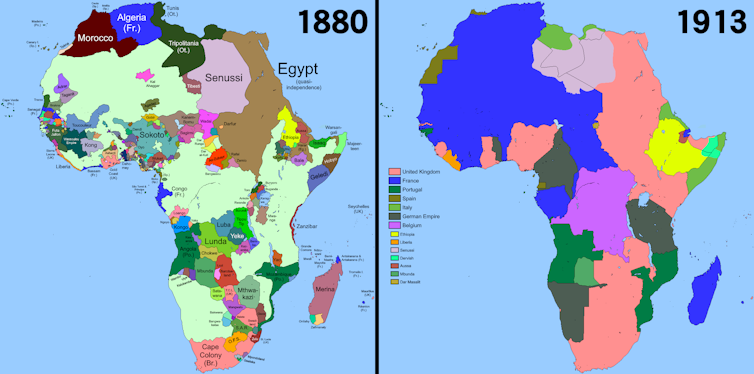Ukraine isn’t invited to its own peace talks. History is full of such examples – and the results are devastating

Ukraine has not been invited to a key meeting between American and Russian officials in Saudi Arabia this week to decide what peace in the country might look like.
Ukrainian President Volodymyr Zelensky said Ukraine will “never accept” any decisions in talks without its participation to end Russia’s three-year war in the country.
A decision to negotiate the sovereignty of Ukrainians without them – as well as US President Donald Trump’s blatantly extortionate attempt to claim half of Ukraine’s rare mineral wealth as the price for ongoing US support – reveals a lot about how Trump sees Ukraine and Europe.
But this is not the first time large powers have colluded to negotiate new borders or spheres of influence without the input of the people who live there.
Such high-handed power politics rarely ends well for those affected, as these seven historical examples show.

1. The Scramble for Africa
In the winter of 1884–85, German leader Otto von Bismarck invited the powers of Europe to Berlin for a conference to formalise the division of the entire African continent among them. Not a single African was present at the conference that would come to be known as “The Scramble for Africa”.
Among other things, the conference led to the creation of the Congo Free State under Belgian control, the site of colonial atrocities that killed millions.
Germany also established the colony of German South West Africa (present-day Namibia), where the first genocide of the 20th century was later perpetrated against its colonised peoples.

2. The Tripartite Convention
It wasn’t just Africa that was divided up this way. In 1899, Germany and the United States held a conference and forced an agreement on the Samoans to split their islands between the two powers.
This was despite the Samoans expressing a desire for either self-rule or a confederation of Pacific states with Hawai'i.
As “compensation” for missing out in Samoa, Britain received uncontested primacy over Tonga.
German Samoa came under the rule of New Zealand after the first world war and remained a territory until 1962. American Samoa (in addition to several other Pacific islands) remain US territories to this day.
3. The Sykes-Picot Agreement
As the first world war was well under way, British and French representatives sat down to agree how they’d divide up the Ottoman Empire after it was over. As an enemy power, the Ottomans were not invited to the talks.
Together, England’s Mark Sykes and France’s François Georges-Picot redrew the Middle East’s borders in line with their nations’ interests.
The Sykes-Picot Agreement ran counter to commitments made in a series of letters known as the Hussein-McMahon correspondence. In these letters, Britain promised to support Arab independence from Turkish rule.
Leia mais: What was the Sykes-Picot agreement, and why does it still affect the Middle East today?
The Sykes-Picot Agreement also ran counter to promises Britain made in the Balfour Declaration to back Zionists who wanted to build a new Jewish homeland in Ottoman Palestine.
The agreement became the wellspring of decades of conflict and colonial misrule in the Middle East, the consequences of which continue to be felt today.



Nenhum comentário:
Postar um comentário